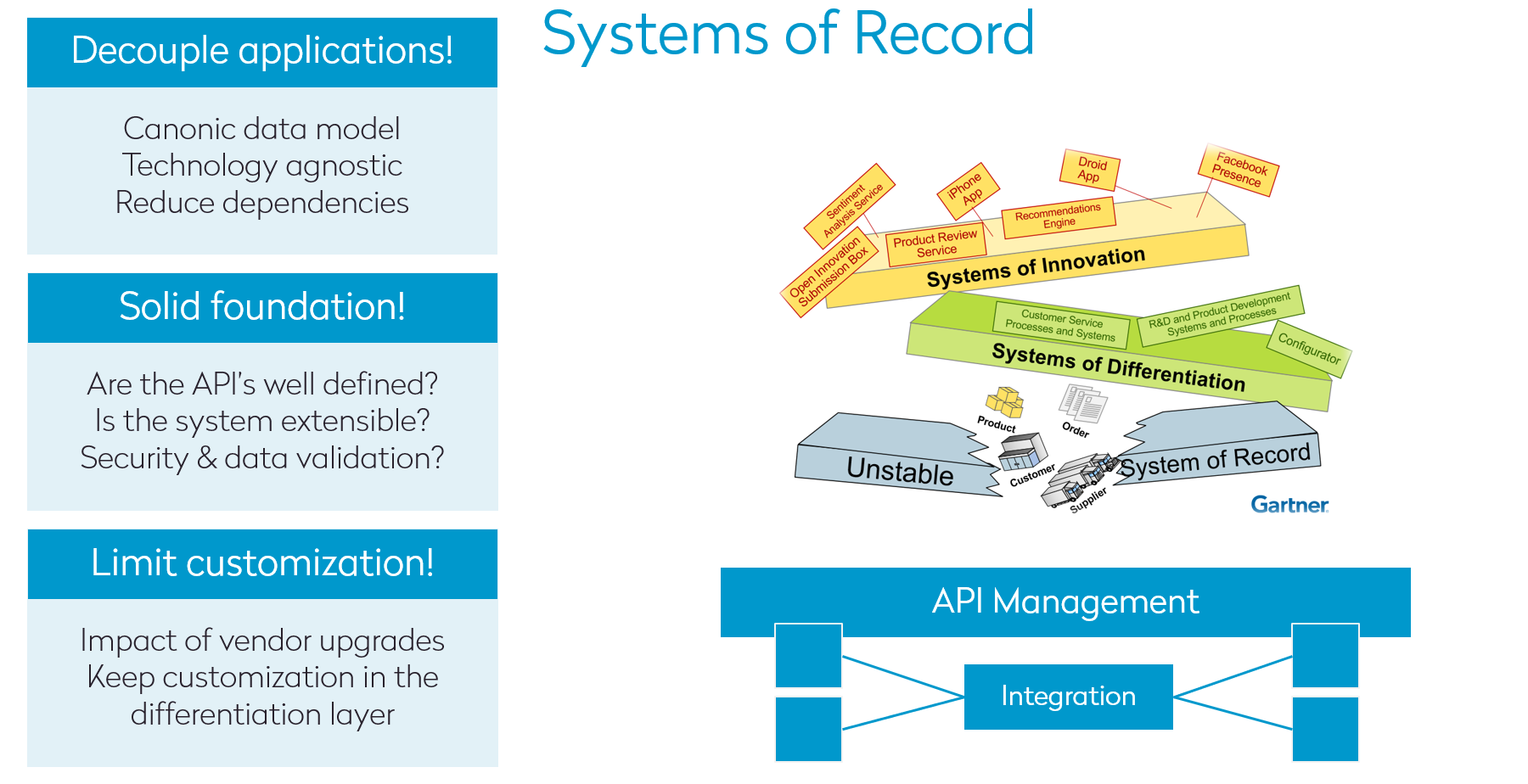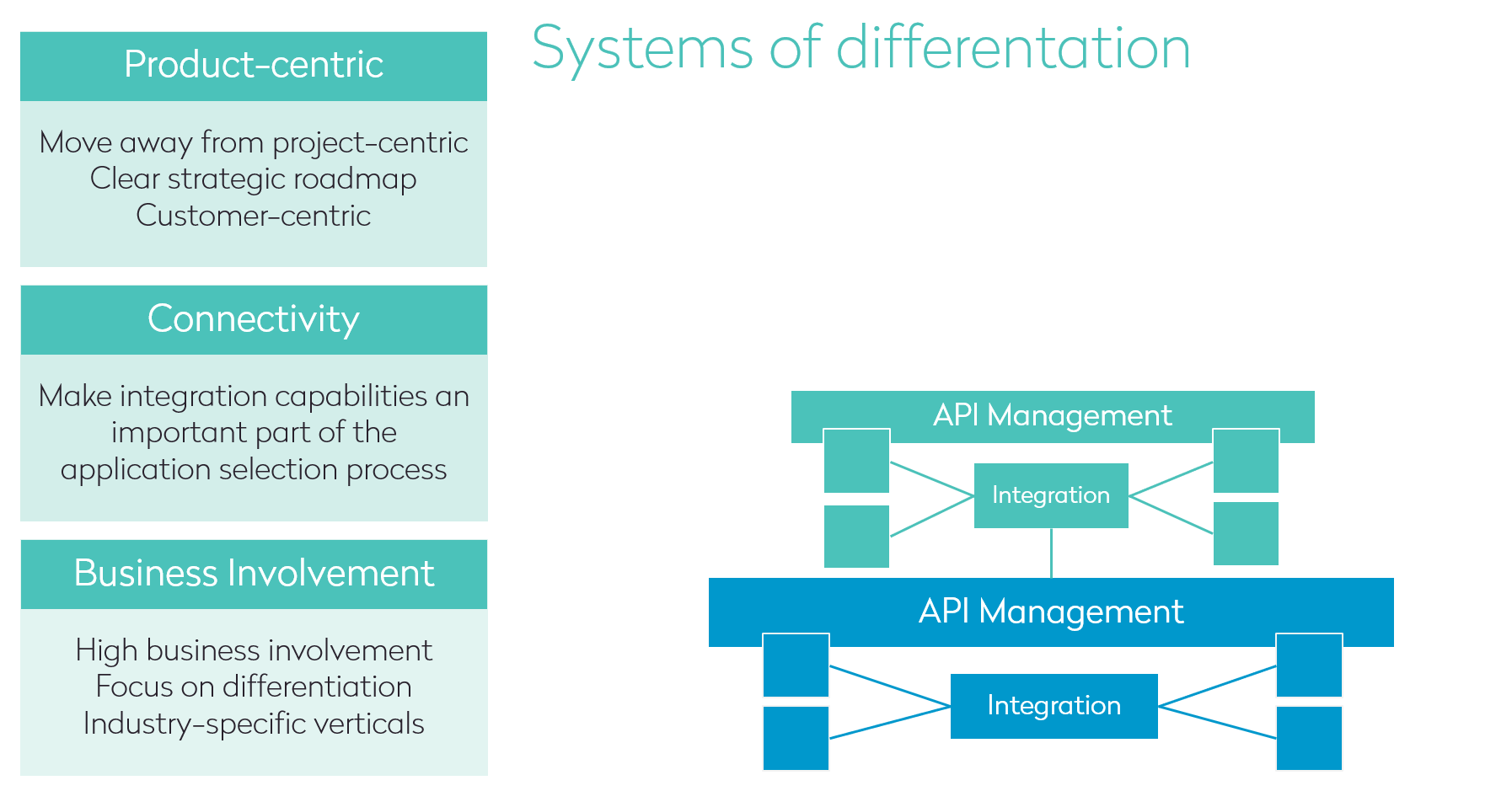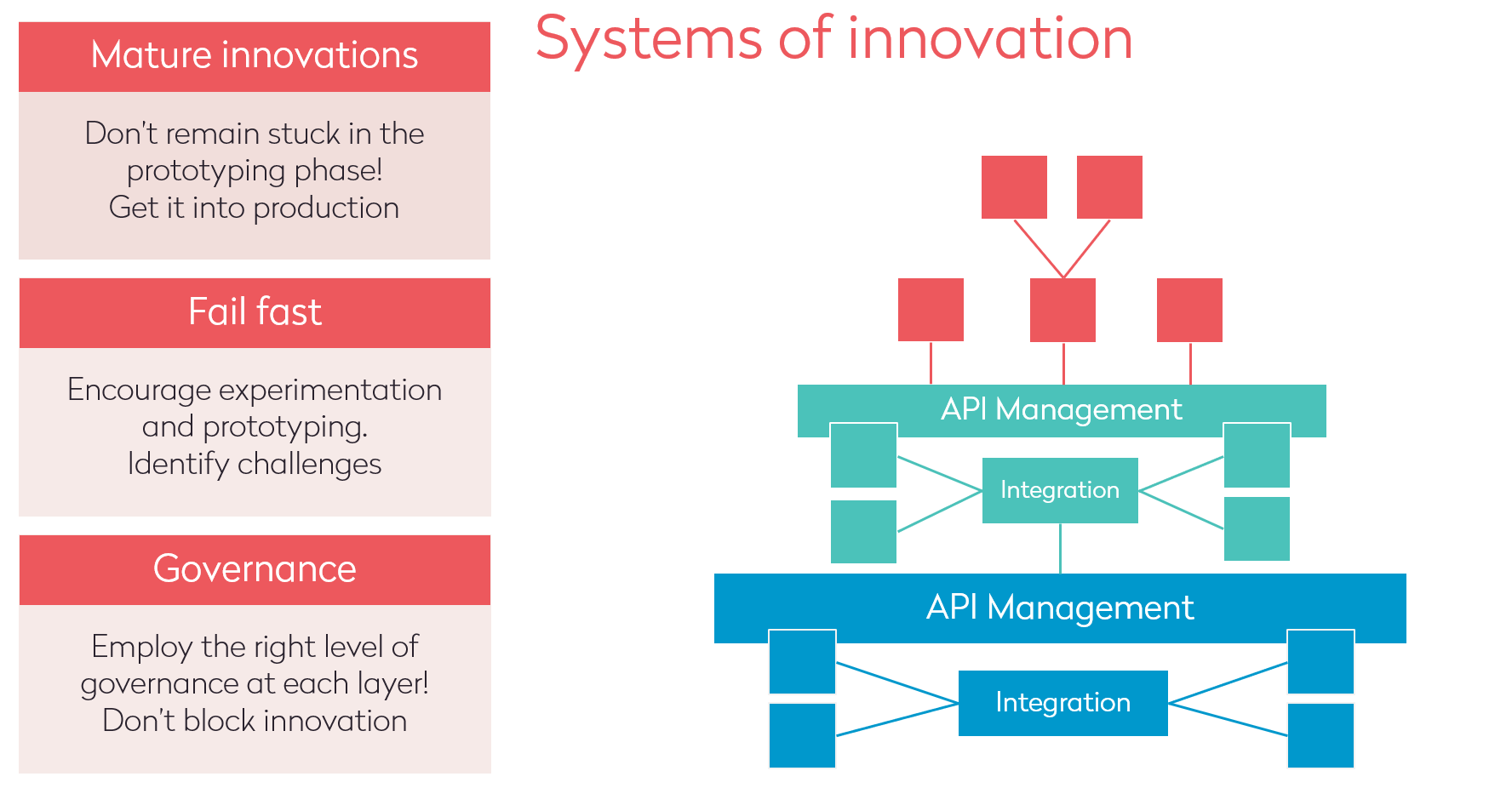Modifying systems at the appropriate pace makes sense, but exactly how to do so (and how not to do so) to isn’t always clear. Here are some guidelines for what to do, and what to avoid, when making changes at each layer of your architecture.
Record:
- Limit customization – Customizing systems on this layer threatens a company’s ability to upgrade those systems in the future. As such, modifications to record systems should be limited as much as possible and left for those on the differentiation layer.
- Maintain a solid and secure foundation – Any integrations, APIs, or applications built on this layer must be well-defined, solid, and thoroughly validated for data and security. Otherwise, the whole organization will be negatively impacted.
- Decouple applications – Don’t connect these systems directly to each other and instead implement an intermediary integration layer in between. Doing so will safeguard other modules when modifying a single application.

Differentiation:- Involve the business side in decision making and developments – Consider elements beyond security and data logging, incorporating business knowledge and industry-specific requirements to enhance them to best meet market needs and truly “differentiate” these systems from the competition.
- Be picky when choosing your applications – To get the maximum out of your IT landscape, select only applications with strong connectivity and integration capabilities. Otherwise your flashy new application will be sitting pretty all by itself – isolated in your environment with limited functionality.
- Focus on the product instead of the project – Projects are often disconnected initiatives developing within their own separate silos, lacking the benefit of cross-collaboration and preventing you from fully leveraging your efforts. Bring teams together through a global roadmap and a clear vision for your company’s future objectives (e.g. where you want to be in 1-5 years) – ensuring that every change to your IT landscape moves you forward to the shared end goal.

Innovation:- Go easy on the governance – Allow the flexibility and freedom for innovation in this layer by employing only the necessary amount of control. Keeping these systems open enables you to play around with new technologies and functionalities and create high velocity without being bogged down by validation.
- Fail fast – Experiment with this layer to try new ideas and eventually identify potential challenges for when these systems are in production. Maintain an agile mind set – don’t just talk about it, get your hands dirty!
- Keep going – After proof of concepts, get out of prototyping and get into production as soon as possible. R&D can only help advance your business if your organization actually reaches the point of actionable outcomes.

Subscribe to our RSS feed